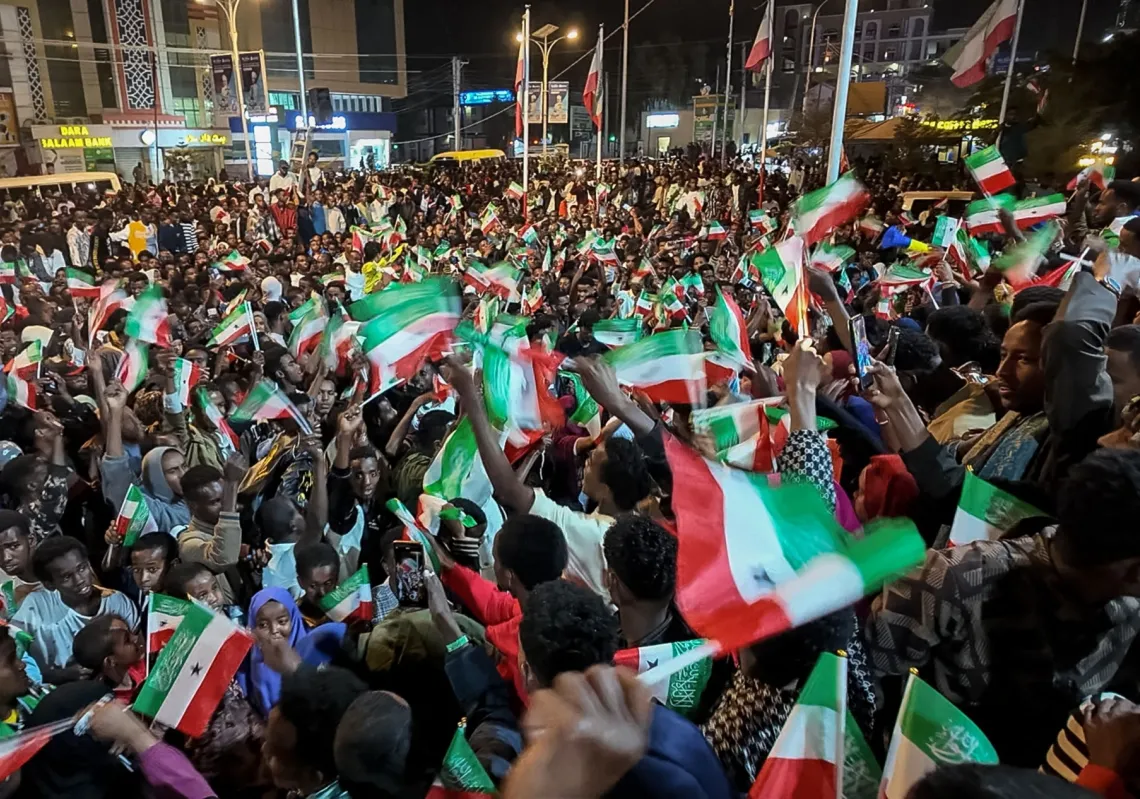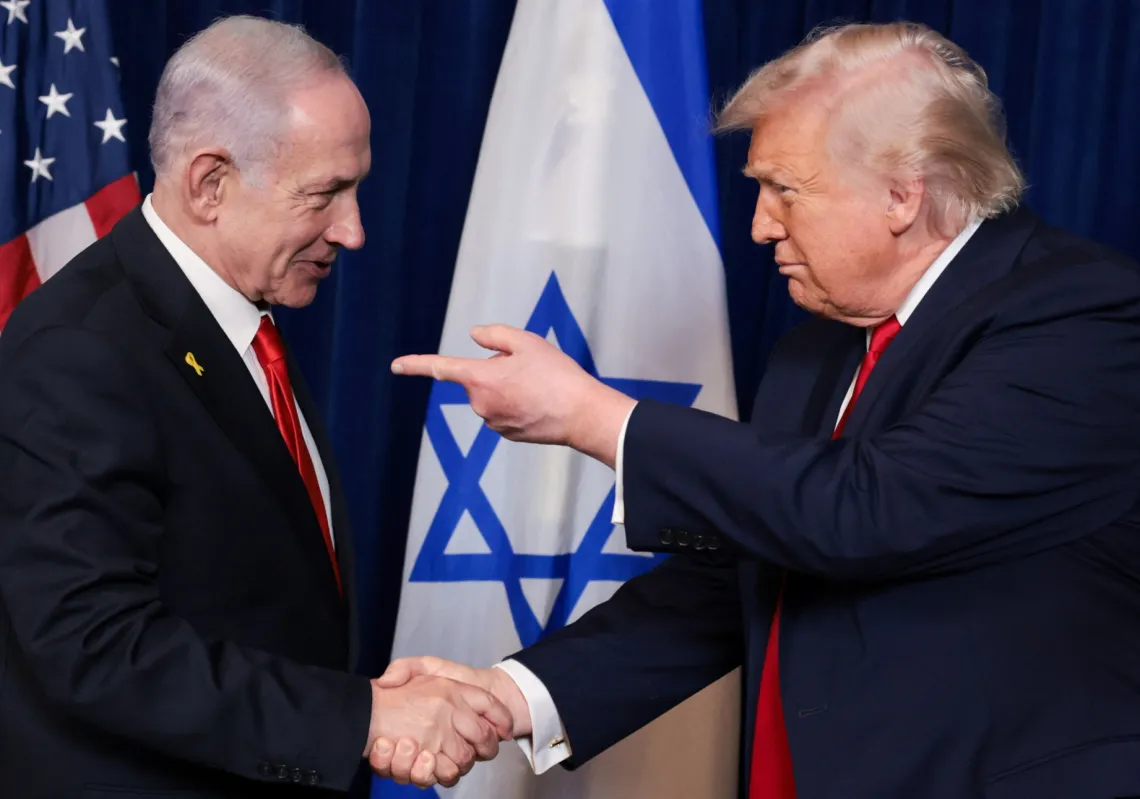Two elections frame the future prospects for the long-troubled relationship between the United States and one of its most persistent and pervasive adversaries, the Islamic Republic of Iran. The first ballot took place last November, and its result – the election and subsequent inauguration of an American president who supports engaging hostile states – opened new possibilities for altering the antagonism between Tehran and Washington.
The second ballot will take place on June 12, when Iranians decide whether to retain their provocative president, Mahmoud Ahmadinejad, for a second four-year term. Iran’s presidential election will not alter the structure of power in the Islamic Republic in the short term, nor is it likely to produce dramatic changes in Tehran’s posture on the key areas of American concern – specifically, the frenetic pace of Iran’s nuclear activities and the widening scope of its influence across the Middle East.
Still, though the regime will delimit both the campaign and the potential consequences of its outcome, the ballot surely matters, both for Iran and for the future of any negotiations with Washington. Ultimately, the way that Iran’s presidential election plays out will shape the context for the tentative diplomatic dance that has begun to unfold between Washington and Tehran and will serve as an essential bellwether for understanding which direction Iran’s unpredictable evolution is likely to shift next.
Iranian Election
Over the course of its three decades, the Islamic Republic has engaged in national elections on a surprisingly regular basis, starting with the initial referendum on the future of the post-revolutionary regime and continuing with recurring ballots for the presidency and parliament and other institutions. Although none of these ballots has met international standards for free or fair elections, the campaigns have been far more competitive than the regime’s theocratic nature might suggest, repeatedly generating unexpected outcomes. As a result, while many Iranians are frustrated with the Islamic system, election turnout remains respectable, and Iran’s political elites invest heavily in the contests.
The upcoming election has become a referendum on the controversial personality and policies of Ahmadinejad. That Iran’s contemporary debates converge around a man who is not even the state’s chief decision-maker may help explain the partiality shown to him by the man who is – supreme leader Ayatollah Ali Khamenei. Ahmadinejad’s centrality is at least as unexpected as his 2005 ascendance to the country’s second most senior post, without any commensurate prior experience. The Islamic Republic’s presidency is an intentionally weak office. However, by asserting himself boldly, Ahmadinejad has situated himself at the heart of Iran’s most contentious internal debates and at the forefront of its long-running antagonism with Washington.
Ahmadinejad’s success as political impresario is not matched by an ability to govern effectively. Ahmadinejad’s spendthrift policies and interventionist approach to the economy has fueled record inflation and done little to satisfy the employment needs of its disproportionately young population. More worrisome, under his stewardship, Iran’s relationships with all of its historic partners have deteriorated and for the first time in post-revolutionary history the United Nations has imposed multilateral sanctions.
Such a track record has unnerved many orthodox supporters of Iran’s Islamic system, who worry about the potential for popular dissatisfaction to escalate into social unrest. Moreover, Ahmadinejad’s impudence toward the old guard, his proclivity for invoking millenarian dogma, and his intemperate rhetoric has riled some regime stalwarts, particularly within the senior clergy. Opposition to Ahmadinejad among Iran’s patriarchs is largely checked by their overriding commitment to the system and aversion to political disruption. Less restrained is the younger generation of conservative politicians, including former Revolutionary Guards commander Mohsen Rezai, who has challenged Ahmadinejad in the upcoming election. Rezai is unlikely to command a plurality at the ballot box or even among his own conservative faction, but his bid stakes a claim to future leadership that will intensify the rivalries among Iran’s elites and potentially sow the seeds for broader political competition in the future.
On the other side of Iran’s political spectrum, reformists too are treating this election as a crucial milestone for enhancing their place in the power structure. Many reformists initially converged around a third term for former president Mohammad Khatami, reflecting his resurgent popularity since leaving office along with the widely-held presumption that he alone could command sufficient votes to defeat Ahmadinejad. But Khatami’s stomach for the fight remains limited, and his decision to step aside cleared the way for two revolutionary stalwarts to wage a more vigorous contest against the current president, advocating a platform of incremental moderation.
By far the most intriguing candidacy of the viable contenders is that of former prime minister Mir Hoseyn Musavi, who is widely revered for shepherding the state through the eight-year war with Iraq and has now taken up the mantle of reform. However, Musavi’s prospects are undercut by his history of friction with Khamenei, and by the possibility that another reformist candidate, former parliamentary speaker Mehdi Karrubi, may siphon off some of the anti-Ahmadinejad votes.
Given the history of upset victories and the fluidity of the current political environment, no seasoned observer of the Iranian political scene would dare to predict the outcome of a fiercely contested Iranian election. Despite his manifest unpopularity, Ahmadinejad has the advantages of incumbency and the system’s capacity for manipulating at least a modest proportion of the vote. The only certainty in advance of the ballot is that Iran’s political landscape is set to be transformed yet again, and with it potentially the future of its relationship with Washington.
The Politics of Engagement
Iran’s election comes on the heels of a dramatic change in American leadership. President Barack Obama adopted a bold position on Iran during the campaign, taking criticism from his Democratic rivals for his stated willingness to meet directly with Iranian leaders. His election effectively ended eight years of infighting within the American security establishment about the utility and propriety of engaging Iran.
The debate was disingenuous, as the single consistency of U.S. policy toward Iran since 1979 has been the willingness of every American administration to deal directly with Tehran. Even President George W. Bush – who branded the Islamic Republic as a charter member of the ‘Axis of Evil’ and snubbed Iranian overtures in the aftermath of America’s initial successes in Iraq – experimented with engagement. Indeed, his officials’ early dialogue with Iran on Afghan issues constituted the most serious bilateral talks since the end of the hostage crisis.
Still, Bush’s subsequent hubris in curtailing diplomacy and seeking to undermine the Iranian regime proved unsuccessful in addressing Iranian challenges and unsustainable as America’s endeavors in Iraq and Afghanistan stumbled. As a result, even Bush was forced to reverse course and reluctantly revive diplomatic overtures toward Tehran. For this reason, Obama’s pursuit of engagement have generated relatively little backlash in the U.S. once the partisan wrangling of the presidential campaign had ended. A core of the American security establishment has long accepted the utility of some negotiated resolution to the Iranian estrangement. The obstacle for most of the past thirty years has come from Iran.
More recently though, Tehran has signaled greater room for maneuver vis-à-vis the United States. Pronouncements by the supreme leader as early as 2006 suggested an unprecedented readiness to deal directly with Washington in a public, authoritative fashion on an issue-specific basis. Khamenei’s declarations produced few real returns in terms of concessions or even actual talks, but signified the waning of the relevance of Iran’s internal power struggle for its approach to America. Iran’s perpetual factional bickering will continue, but for the first time in its post-revolutionary history, the regime is no longer splintered around the basic question of talking to Washington.
The result should be a unique convergence between American and Iranian readiness to negotiate for the first time since Iran’s revolution thirty years ago. But this convergence cannot itself ensure success, and one of the crucial variables is the Iranian presidential campaign. The outcome will have direct bearing on the prospects and the process of diplomacy in ways that are unlikely to be straightforward and easily foreseeable. Another Ahmadinejad term might bolster Tehran’s recalcitrance but also intensify the international community’s urgency for dealing with Iran, while his replacement by a more moderate political figure might only revive Iran’s internal power struggle and its consequent paralysis toward Washington.
Ultimately, irrespective of the victor in the June ballot, Iran’s future leadership will find that engagement in and of itself will not prove a panacea for its frictions with the rest of the world. Every prior attempt at engagement by U.S. or Iranian leaders has failed, as a result of misconceptions and missed opportunities by both sides. This year could see the track record of American-Iranian diplomacy change for the better, but thirty years of pitfalls and animosities to contend with.
Suzanne Maloney - Senior Fellow, The Saban Center for Middle East Policy at the Brookings Institution, Washington, DC. Author of: IRAN'S LONG REACH Iran as a Pivotal State in the Muslim World








